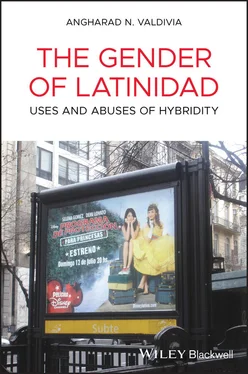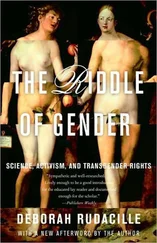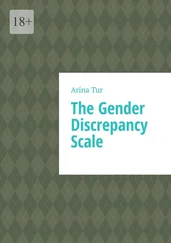Working at the Institute of Communications Research has meant that I have had the privilege of working with world‐class students, who easily surpass me once they graduate. I read their dissertations and humbly return to my less sophisticated work in progress, ready to reference their work and sharpen my analysis. Within the period I wrote this book, I have learned from all of my former advisees: Carrie Rentschler, Boatema Boateng, Kelly Gates, Lori Reed, Diem‐my Bui, Jillian Baez, Dennis Redmond, Christina Ceisel, Rich Potter, Mei Bai, Michelle Rivera, Alicia Kozma, Arnau Roig Mora, Koeli Goel, Rico Chenyek, Stephanie Brown, and Meghan Grosse. My former RA Susan Harewood, on whose committee I participated, remains one of my heroes. It is taking me years to get over her departure (I am still working on it). My current advisees, Diana Leon‐Boys, Morten Stinus Kristensen, elizaBeth Simpson, and Stephen Hocker, collectively promise to extend the boundaries of our interdisciplinary field. #BESTJOBEVER!!!
I am a family person with an extensive family network. Mom, sisters, brothers, in‐laws, nephews and nieces, cousins, and grandchildren. I have been blessed by three children, two daughters and a son, who have grounded me, made me a better person, and revealed my faults and shortcomings. My daughters Ailín del Carmen and Rhiannon are sharp, beautiful, and brilliant beings. Any style or common sense I have acquired, I owe to them. Lucas = happiness, pure and simple. I am still waiting for Tobin to come home. Cameron remains my rock, my sage, my funny partner, my solid supporter, and my irrepressible and unstoppable traveling companion – through the world and through life. I live surrounded by love, and I wish this for everyone.
Gracias a la vida, que me ha dado tanto.
1 Continuities and Ruptures: The Gender of Latinidad
…the gendered subject of globalization, far from being self‐evident or transparent as often assumed, has to be situated within shifting formations of power.
(Hegde 2011, p. 1)
When I started, I was labeled “exotic.” That was it. It was like you had to be mysterious and sexual. Back in the day if you were Latina it was always a stereotype. They couldn't write you as a normal person in the world. [Director] Robert Rodriguez was kinda the first person who made Latinos commercial in his movies, like in the Spy Kids franchise. And then Jennifer Lopez and Salma Hayek [helped pave the way]. It was tough in the beginning.
(Jessica Alba, quoted by Brown 2018, p. 93)
In this millennial rewriting of Latina/o media history, Jessica Alba, a 37‐year‐old Latina mogul, takes us back to Robert Rodriguez's success story, begun in 1991, and Jennifer Lopez's Fly Girl days in 1992 – or perhaps to her major starring role in Selena , in 1997. Salma Hayek also crossed over to Hollywood from Mexico in 1991 but did not achieve a major role until she landed a part in Robert Rodriguez's Desperado (1995). Alba nails a historically significant period of Latina/o popular culture ascendance in which Latina/os functioned in particular roles but managed to rupture stereotypes and achieve lasting inclusion in the entertainment industry. All of those mentioned by Alba remain in the spotlight today: Robert Rodriguez, Jennifer Lopez, and Salma Hayek have not disappeared. Indeed, their careers are solid, their legacy secure. Jessica Alba herself continues to have success as a cover girl and neoliberal entrepreneur, creator and owner of the billion‐dollar Honest Company, selling organic and environmentally sustainable baby and beauty products. All of these prominent popular culture Latina/os have a broad range of provenances and function in relation to one another and to other ethnicities within a national and global terrain of mainstream media. None of them are pure, nor do they resemble one another. Yet, they represent mainstream Latinidad. Their varied careers, geographical and professional roots, and visibility speak to the gender of Latinidad in contemporary mainstream media.
One undeniably enduring component of any politics of inclusion continues to be mainstream media – whether legacy, digital, or thoroughly converged – as this serves to circulate narratives with embedded ideologies to a wide swath of the population. So‐called “minority” populations deserve presence, respect, and dignity in the mainstream because they/we are part of the mainstream, and expectations that apply to mainstream presence go to the core of citizenship issues (Amaya 2013; Casillas 2014). This book focuses on Latinidad as a broad multiplicitous and diverse category of ethnicity that is pan‐national, multi‐ethnic, intersectional, and transnational. Latinidad is a flexible and unstable hybrid construct whose mediated presence remains salient in the new millennium and indexes broader currents of population mixtures, resulting demands, and backlashes from and through the mainstream, which both construct and are constructed by the cultural struggle identified so long ago by Gramsci, amended by Bauman, and articulated to media by Shohat and Stam (1995).
Thoroughly grounded in a set of analytical frameworks derived from the intersection of Media and Cultural Studies, Gender Studies, and Latina/o Studies, as a form of Ethnic Studies, The Gender of Latinidad explores the tension between the politically necessary strategic essentialism that identity categories rely on to make demands upon the state and the impossibility or untenability of maintaining these categories as discrete and easily identifiable – the conundrum of authenticity. Moreover, The Gender of Latinidad explores this tension as it is played out through the bodies of and cultural forms signifying girls and women. Given the growing institutionalization of Latina/o Studies as a pan‐ethnic construct, this project sets out to contribute to an extension of existing paradigms. 1 As a way to understand the increased acknowledgment of the heterogeneous complexity of Latina/o populations, industries, and cultural forms, The Gender of Latinidad draws extensively on hybridity and mixed race as essential, recurring, and unifying concepts for understanding the contemporary situation of ethnicity and the media. Given that the Latina/o population and Latina/o popular culture encompass a wide range of origins – perhaps running the gamut of origin possibilities – The Gender of Latinidad maintains a tension between identifying and acknowledging Latinidad, allowing or erasing its multiplicity, and identifying its spillage into other ethnic categories or markers. Ultimately, this book explores the tension between the top‐down efforts by media industries to market ethnicity and the bottom‐up pressures and efforts to gain employment, expand visibility, and transform the mainstream. What are some of the current degrees of freedom? Rules of engagement? Who benefits within Latinidad? The material conditions that segregate racialized communities and generate bottom‐up community pride formation, as well as strategies for inclusion in the body politic and in mainstream culture, coexist with efforts to exploit newly created niche audiences for the purposes of increasing profit. Latina/os draw on symbolic resources to maintain an identity and draw from a shared history even as their massive mobility and mixture generate a hybrid culture. Mainstream media industries draw on an archive and an overflow of talent and creativity from ethnicized populations to pick and choose what fits best with their vision of “multiculturalism.” Latina/os must disrupt and provide their vision, which itself is contested due to their heterogeneity.
The year is 2019. In the past 5 years, Latina/os have been highly visible in a range of mainstream television programs, post‐network digital offerings, and feature‐length films, such as Modern Family (ABC, 2009–19), Jane the Virgin (CW, 2014–19), Narcos (Netflix, 2015–), East Los High (Hulu, 2013–17), Coco (Disney, 2017), One Day at a Time (Netflix, 2017–19), and Beatriz at Dinner (Killer Films/Bron Studios, 2017). Latina/os are present on the screen, behind the screen, and as audiences. As we explore and analyze visibility through presence, production, and interpretation, we need to consider the demands for visibility as a complex process and dynamic that encompasses the trifecta of media studies – production, content, and representation – in relation to issues of cultural citizenship, the inescapable hybridity that works against the fantasy of authenticity, and the implicit utopia that is both never articulated and always beyond the possible. As Latina/o Media Studies ascends into a field of its own, in relation to a number of interdisciplinary projects, it also experiences the limits and possibilities of expansion, dilution, and acknowledged hybridity. It was much easier for hegemonic forces to produce mainstream popular culture and proceed when a simplified purity and imposed homogeneity prevailed as dominant discourses. From a mostly white mainstream, to a Derridean juxtaposition of white and black bodies and narratives, to the inclusion of the homogenized bronze 2 race, to the suggestion of AfroLatinidad, the presence of Latina/os disrupts easy narratives of the US national imaginary. Moreover, because the United States has been an imperial power and thus US media conglomerates function across a global terrain, these narratives circulate transnationally. Thus, the visibility of US Latina/os has global implications, though these remain to be extensively researched.
Читать дальше












